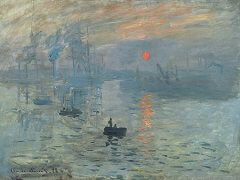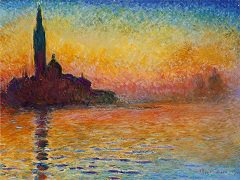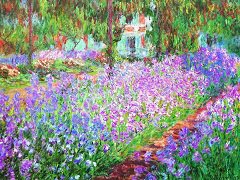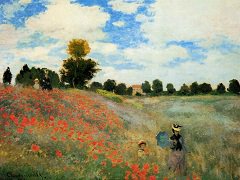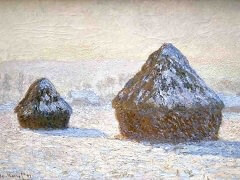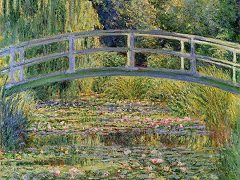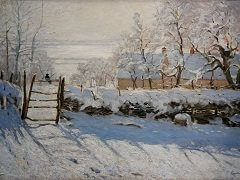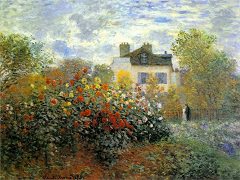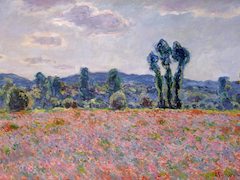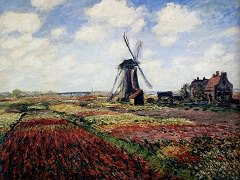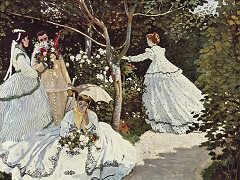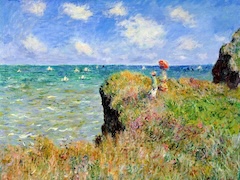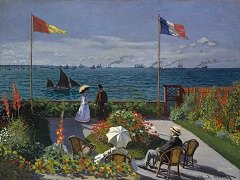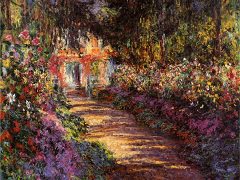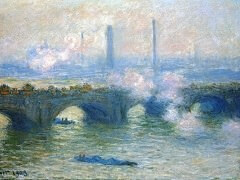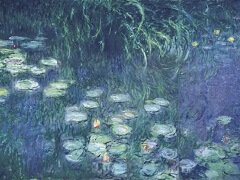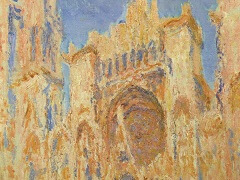The Rue Montorgueil in Paris by Claude Monet
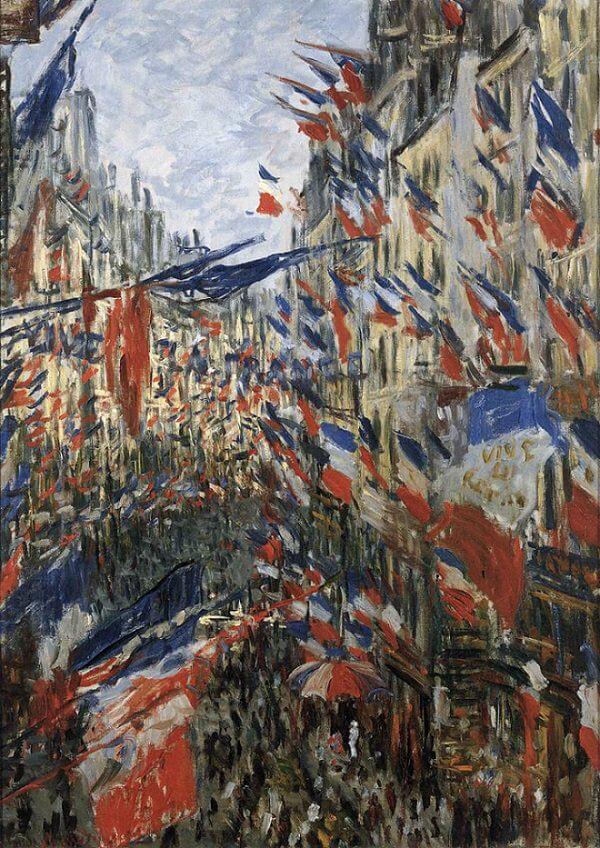
This striking Impressionist work in 1878, The Rue Montorgueil in Paris (Celebration of 30 June 1878), was twinned with The Rue Saint-Denis and was thought to be connected to a July 14 celebration. However, it was painted June 30 for a government festival of "peace and work." It was one of the initiatives organized for the Universal exhibition in Paris and intended as a symbol of France's recovery following defeat in 1870. This urban landscape is extremely "busy" with its flags expressing patriotism, following such fragility, with colors adding to the vibrancy of modern France and the milling crowd below.
The impressionist technique, with its multitude of small strokes of color, suggests the animation of the crowd and the wavering of flags. This allowed the American historian Philip Nord to write that it perfectly fits the "republican moment" marking the emergence of a democratic society and its roots in contemporary France. With this painting, Monet revealed a hidden aspect of modernity, while simultaneously achieving the work of a "reporter".
Inspired by Monet's work, Vincent van Gogh created a similar work The 14th of July

